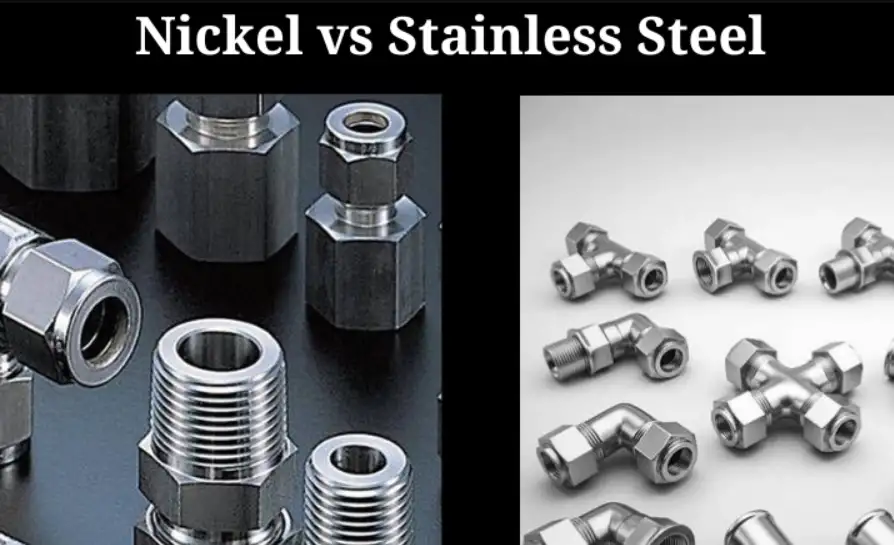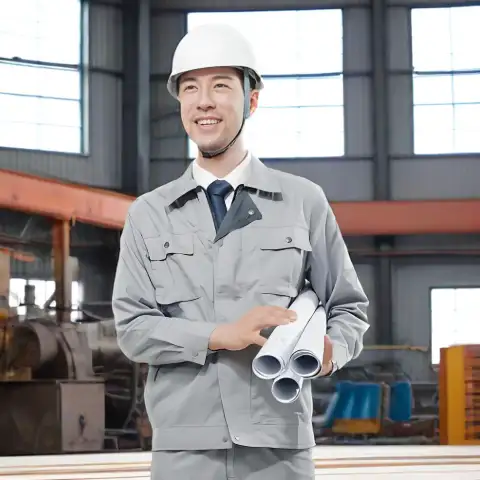When comparing nickel alloys to stainless steel, the key differences lie in composition, corrosion resistance, temperature tolerance, and cost. While stainless steel is a reliable, cost-effective material commonly used in construction and consumer applications, nickel alloys are engineered for extreme environments, offering superior resistance to heat, corrosion, and stress. Choosing between them depends on performance requirements, budget, and environmental factors.
1. Why this Comparison Matters
In today’s industrial landscape, selecting the right material is not just about function — it’s about safety, performance, and long-term economics. At MWalloys, we work closely with engineers, procurement officers, and metallurgists who frequently ask: What’s the real difference between nickel alloys and stainless steel? We’re here to give you a no-fluff, data-backed answer.
2. Definitions: What is Nickel Alloy? What is Stainless Steel?
Nickel Alloys are a group of metallic materials primarily composed of nickel (typically over 50%), often combined with elements like chromium, molybdenum, iron, and cobalt. These materials are engineered to perform in extremely demanding conditions—such as corrosive chemical environments or high-temperature aerospace systems.
Stainless Steel, on the other hand, is an iron-based alloy that contains at least 10.5% chromium. The chromium forms a passive layer that resists rust. Stainless steel comes in many grades (e.g., 304, 316, 410) and is known for affordability and widespread use in infrastructure, kitchens, medical equipment, and more.
3. Composition Differences
| Element | Stainless Steel 304 | Nickel Alloy (Inconel 625) |
|---|---|---|
| Chromium (Cr) | 18–20% | 20–23% |
| Nickel (Ni) | 8–10.5% | ≥58% |
| Iron (Fe) | Balance | <5% |
| Molybdenum (Mo) | None | 8–10% |
| Carbon (C) | ≤0.08% | ≤0.10% |
Source: AZoMaterials
Stainless steels usually contain lower levels of nickel, making them more cost-effective but less specialized. Nickel alloys, on the contrary, are meticulously balanced for high performance.
4. Mechanical Properties Comparison
Nickel alloys tend to outperform stainless steel when it comes to strength and durability under extreme stress and temperature.
| Property | Stainless Steel 304 | Nickel Alloy (Inconel 718) |
|---|---|---|
| Yield Strength (MPa) | ~215 | ~1030 |
| Ultimate Tensile (MPa) | ~505 | ~1240 |
| Elongation at Break (%) | ~70 | ~30 |
| Hardness (Brinell) | 201 | 330 |
Nickel alloys are also more fatigue-resistant and exhibit better creep performance under prolonged heat exposure.

5. Corrosion Resistance Performance
Stainless steel offers excellent corrosion resistance in general atmospheres and freshwater. But under harsh chemical or saltwater environments, it begins to deteriorate.
Nickel alloys shine in the presence of acids, alkalis, and seawater. For example, Hastelloy C-276 is known for resisting hydrochloric acid, sulfuric acid, and chlorine gas—conditions that rapidly destroy stainless steel.
6. Temperature Tolerance and Heat Resistance
Stainless steel softens above 870°C. In contrast, nickel alloys maintain structural integrity beyond 1100°C, making them ideal for:
-
Gas turbines
-
Jet engines
-
Nuclear reactors
A real-world test demonstrated that Alloy 600 withstood temperatures up to 1175°C without significant degradation.
7. Applications in Industry
| Industry | Stainless Steel | Nickel Alloy |
|---|---|---|
| Food Processing | 304, 316 Stainless | Rarely used |
| Aerospace | Limited (fasteners, interiors) | Inconel 718, Hastelloy X |
| Chemical Processing | 316L, 904L | C-22, C-276, Alloy 20 |
| Marine Engineering | 316/316L | Monel 400, Inconel 625 |
| Power Generation | 321, 347 Stainless | Inconel 600, 617, 625 |
8. Cost Comparison
The average price of Nickel Alloy Inconel 625 in 2025 is around USD $35–$45/kg, while 304 Stainless Steel averages USD $2.50–$3.50/kg.
Why the gap? Nickel is significantly more expensive, and alloy processing is more complex.
9. Standards and Certifications
-
Nickel Alloys: ASTM B163, B564, B574
-
Stainless Steel: ASTM A240, A312, A276
When sourcing these materials, ensure your supplier complies with relevant standards from ASTM, ISO, and NACE for pressure equipment, corrosion resistance, and mechanical integrity.
10. Environmental and Lifecycle Considerations
Nickel alloys, while expensive, often result in lower long-term maintenance costs due to reduced failure rates and replacement frequency. Stainless steel, however, is more recyclable and has a lower carbon footprint during manufacturing.
In a 2023 lifecycle assessment by the Nickel Institute, it was noted that nickel-containing alloys showed a 40% longer average service life in corrosive environments compared to stainless steel.
11. Global Market and Production Statistics
According to USGS 2024 data, the global production of nickel reached 3.6 million metric tons, with Indonesia and the Philippines leading the charge. Stainless steel production topped 56 million metric tons, led by China.
12. Summary Table: Nickel Alloy vs Stainless Steel
| Feature | Stainless Steel | Nickel Alloy |
|---|---|---|
| Cost | Low | High |
| Corrosion Resistance | Moderate | Excellent |
| High-Temp Performance | Fair | Superior |
| Common Uses | General purpose | Extreme environments |
| Service Life | Moderate | Long-lasting |
| Availability | Widely available | Specialized suppliers |
13. YouTube Explainer Video
14. FAQs
Q1: Can I use stainless steel instead of nickel alloy in marine environments?
A1: Not recommended. While 316 stainless steel resists saltwater, nickel alloys like Monel 400 provide superior corrosion protection and longer life.
Q2: Why are nickel alloys more expensive?
A2: Nickel itself is costlier, and these alloys require advanced refining and precision manufacturing techniques.
Q3: Are nickel alloys magnetic like stainless steel?
A3: Most nickel alloys are non-magnetic, similar to austenitic stainless steels (e.g., 304, 316), but exceptions exist.
Q4: What’s the best material for chemical reactors?
A4: For extreme chemical resistance, Hastelloy C-22 or C-276 is preferred over stainless steel grades.
Q5: Is welding nickel alloys more difficult than stainless steel?
A5: Yes. Nickel alloys demand skilled welders, inert shielding gases, and post-weld treatments to maintain mechanical properties.
Q6: Which is better for high-temperature applications?
A6: Nickel alloys like Inconel 625 are engineered for high-heat, outperforming stainless steel in creep strength and oxidation resistance.
15. Conclusion: Which Material Should You Choose?
It depends. If you’re building a food plant or railings, stainless steel offers excellent value. But for high-temperature or highly corrosive conditions—such as power plants or chemical reactors—nickel alloys are worth the investment. At MWalloys, we help clients assess lifecycle cost vs performance to select the right alloy for their unique application.

